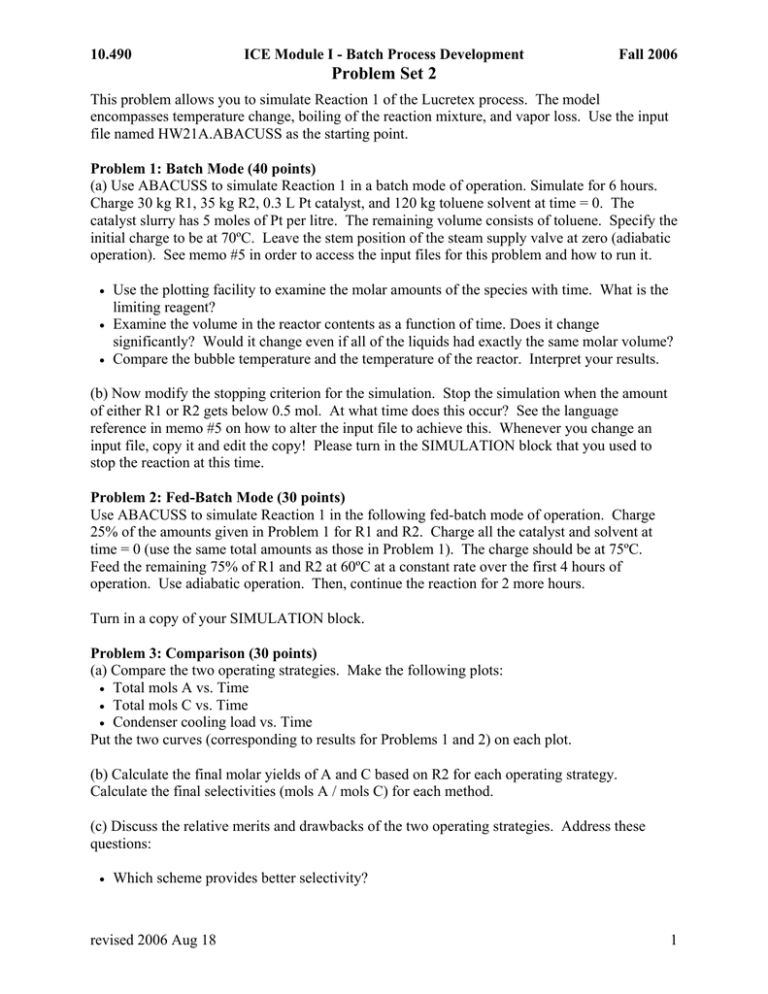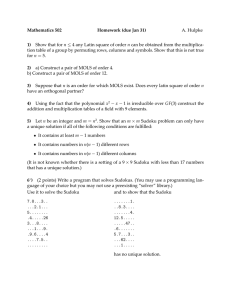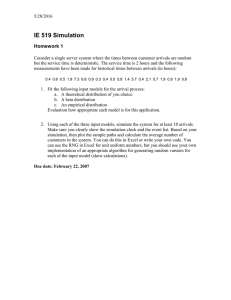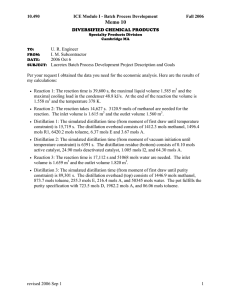Problem Set 2
advertisement

10.490 ICE Module I - Batch Process Development Fall 2006 Problem Set 2 This problem allows you to simulate Reaction 1 of the Lucretex process. The model encompasses temperature change, boiling of the reaction mixture, and vapor loss. Use the input file named HW21A.ABACUSS as the starting point. Problem 1: Batch Mode (40 points) (a) Use ABACUSS to simulate Reaction 1 in a batch mode of operation. Simulate for 6 hours. Charge 30 kg R1, 35 kg R2, 0.3 L Pt catalyst, and 120 kg toluene solvent at time = 0. The catalyst slurry has 5 moles of Pt per litre. The remaining volume consists of toluene. Specify the initial charge to be at 70ºC. Leave the stem position of the steam supply valve at zero (adiabatic operation). See memo #5 in order to access the input files for this problem and how to run it. • • • Use the plotting facility to examine the molar amounts of the species with time. What is the limiting reagent? Examine the volume in the reactor contents as a function of time. Does it change significantly? Would it change even if all of the liquids had exactly the same molar volume? Compare the bubble temperature and the temperature of the reactor. Interpret your results. (b) Now modify the stopping criterion for the simulation. Stop the simulation when the amount of either R1 or R2 gets below 0.5 mol. At what time does this occur? See the language reference in memo #5 on how to alter the input file to achieve this. Whenever you change an input file, copy it and edit the copy! Please turn in the SIMULATION block that you used to stop the reaction at this time. Problem 2: Fed-Batch Mode (30 points) Use ABACUSS to simulate Reaction 1 in the following fed-batch mode of operation. Charge 25% of the amounts given in Problem 1 for R1 and R2. Charge all the catalyst and solvent at time = 0 (use the same total amounts as those in Problem 1). The charge should be at 75ºC. Feed the remaining 75% of R1 and R2 at 60ºC at a constant rate over the first 4 hours of operation. Use adiabatic operation. Then, continue the reaction for 2 more hours. Turn in a copy of your SIMULATION block. Problem 3: Comparison (30 points) (a) Compare the two operating strategies. Make the following plots: • Total mols A vs. Time • Total mols C vs. Time • Condenser cooling load vs. Time Put the two curves (corresponding to results for Problems 1 and 2) on each plot. (b) Calculate the final molar yields of A and C based on R2 for each operating strategy. Calculate the final selectivities (mols A / mols C) for each method. (c) Discuss the relative merits and drawbacks of the two operating strategies. Address these questions: • Which scheme provides better selectivity? revised 2006 Aug 18 1 10.490 ICE Module I - Batch Process Development Fall 2006 Problem Set 2 • • • Which scheme provides better conversion? What would happen if we were limited in the amount of cooling water that was available for the condenser, and we could only remove 5 kJ/sec? What further changes to the operating policy might we try to improve the selectivity? revised 2006 Aug 18 2







